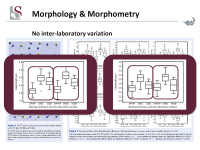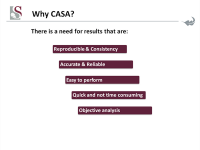A conventional semen analysis, as it is made in a Reproductive biology clinic or general laboratory, tries to find out the quality of the sample. For that purpose, the microscopic characteristics must be evaluated: the concentration of the spermatozoa in the seminal liquid, their motility, morphology, vitality, and more recently, the presence of DNA fragmentation is evaluated.
All with the aim to discover if a patient is fertile, and therefore capable of natural reproduction, or by the contrary would need an Assisted Reproduction technique to help.
Traditionally, a well- trained laboratory technician makes the analysis, starting by the macroscopic visualization of the sample: the colour, odour, Ph, complete Liquefaction. All description data must be recorded.
Following, the microscopic analysis must be done starting with the sperm count with the use of hemocytometer, where the fixed and diluted sample is placed.
And subsequently, one of the most arduous steps in the visual level, the motility analysis, where the technician, through the manual observation of the sample, must be able to distinguish the percentage of motile spermatozoa with progressive movement and the total motile sperm. All that in a sample containing motile and static spermatozoa, embedded in the seminal liquid containing various particles as well.
If the percentage of motile sperm is low, then the vitality analysis must be carried out, to determine if this low motility is due to high mortality in the spermatozoa.
In a routine analysis, the morphology of the spermatozoa is studied too, for which the samples are stained and their size and shape observed, comparing the observations with a normal existing model. There are several classification criteria for the morphology and the WHO one is probably the most followed in the clinics worldwide.
Current situation of the human semen analysis
Despite the existence of systems that helps to standardize and automate the semen analysis, the truth is, the manual analysis described above is still the most frequent in the clinics and Assisted Reproduction centres. Technology has permitted the development of image analysis systems that make possible an exact differentiation between a rapid progressive spermatozoa and a slow one, unattainable by the human eye.
The fact of continuing the manual analysis, meaning delegating all responsibility to a technician making a subjective visualization through the microscope and manually recording all the results in a form, has permitted the existence of failures in the analysis. And it is well known the existence of variations in the results if the same sample is analyzed by different experience and well-trained technicians, and even, by the same technician in different times of the day.

Several papers have mentioned these facts, as the following: “CASA-based sperm kinematics of environmental risk factor-exposed human semen samples designated as normozoospermic in conventional analysis”, manifesting the need of standardization in the aim to obtain an accurate diagnostic.
*Fig: Data obtained with a CASA system in the study

On the contrary, using a CASA system this variation disappears, even between different laboratories and personnel, as they could test in this Human reproduction publication: “Morphometric dimensions of the human sperm head depend on the staining method used”, where two different laboratories having the CASA Sperm Class Analyzer® obtained very similar results.
*Fig: The left figure shows the data obtained in Western Cape Town University, and the right one in the University of Stellenbosh.

Furthermore, a CASA system permits to obtain verifiable data, as the images registered can be analyzed again, thus permitting an internal and external quality control, reproducibility and rapidity in obtaining quality data, as well as friendly use.
All these advantages would allow a better male fertility diagnostic and consequently treatment, or decision making, in the case to resort an Assisted Reproduction Technique, which is never an easy path for the couples.
*Fig: CASA advantages
* All figures from Prof Stefan DuPlessis presentation during RAHR conference, Russia, 2012




Cost of CASA and would like to purchase in Chennai India
I will like to know the price of casa in Nigeria as I plan to purchase one. I will prefer type that can analyze both human and rat sperm
Dear Amos Amoo Odetola, Our sales team will contact to you. Thank you.
Hi.
I need technical details and prices.
Dear Raza, thank you for your interest. Could you please send an email to “sales@micropticsl.com” with your specific requirements? We will provide you with more accurate information. Best regards.
HI,
Have a good day.
Can I know please how much is costing this item?
Best regards
Khaled Soliman
Dear Khaled Soliman, Our sales team will contact to you. Thank you.
thart,s a great innovation and i need this automation please send me cost and technical assistant of the SCA Scope…
Thank you for your message. Could you please send an email to “sales@micropticsl.com” with your contact details and specific needs? Best regards.
Good day,
My name is Victor EMOJEVWE from University of Medical Sciences, Ondo, Nigeria. Please I need to know how I can purchase item from your company. there is no link to purchase on the website
Dear Victor Emojevwe, thank you for your request. Our sales team will contact you shortly. Best regards.
Please I need more technicical information and the price
Hi, Our sales team will provide more information by email. Thank you for your interest.
Intresserad av prisuppgifter på utrustni genom i Sverige
Please, send an email to sales@micropticsl.com. Thank you for your interest.
Hi, good system. How much does it cost?
Thanks! Please contact sales team: sales@micropticsl.com